Everything you need to know about the Belgian Endive, from cooking and prepping to variations and storage!
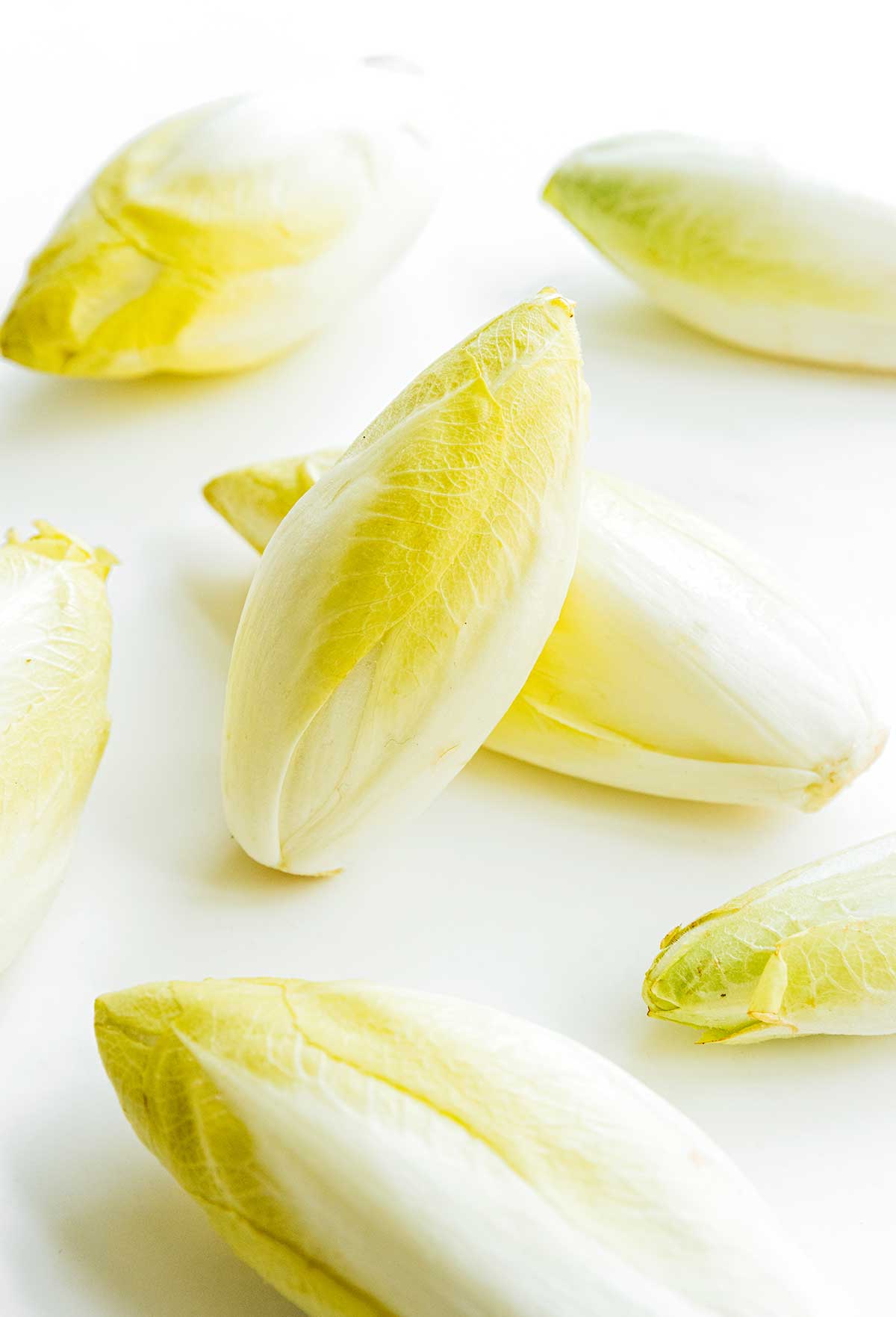
What’s white and light yellow (maybe even light green), kind of bitter, and perfect for salads and sautéed balsamic recipes? Belgian endives! And today we’re highlighting them as our next spotlight ingredient to teach you everything you need to know.
The Belgian endive (pronounced en-daiv) is a lettuce-like veggie that falls into the chicory category. Like it’s cousin radicchio (another chicory plant), endives are slightly bitter. Though they look like lettuce, they’re different in nutrients and texture.
Benefits of Belgian Endives
Belgian endives have a lot of benefits, the first being their low calorie makeup. Like lettuce or other chicory veggies, they’re extremely low calorie and come in at only one calorie per leaf. As someone who likes to load my salads with as many flavorful toppings as I can, that’s a plus for me! Endive is also filled with nutrients like fiber, potassium, and magnesium.
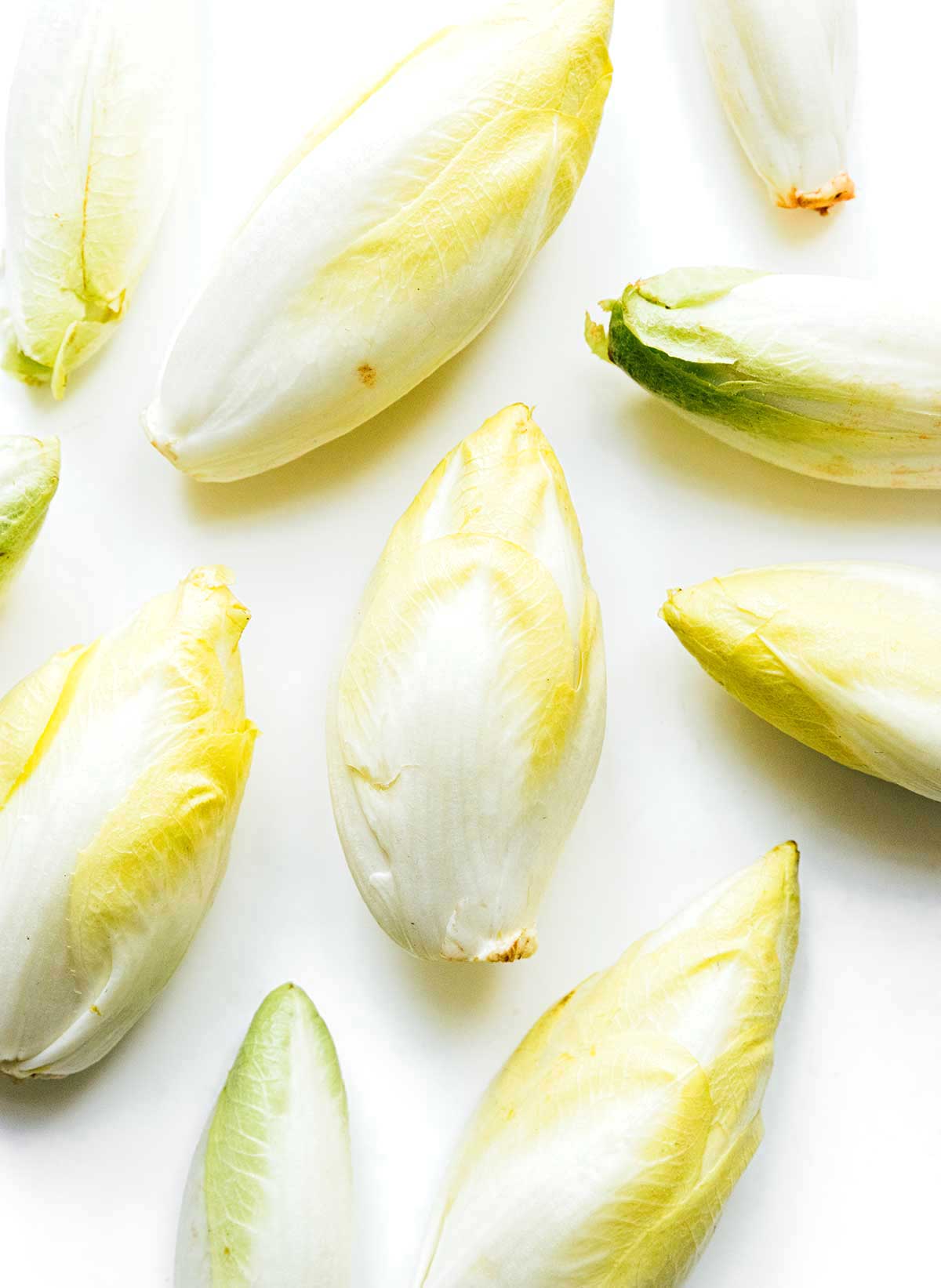
The growing process
The farming process of endives is particularly interesting, because essentially two separate forms of growing and harvesting are needed.
First, chicory is planted. Once it has grown into green leaves (usually around the 150 day mark), it is harvested. The tops of the plants are removed, and the roots are taken out of the soil.
Then it’s time for the second growing season! The roots are placed in a dark and cool storage facility, and it takes another 4 weeks for the full, lettuce-looking vegetables to grow. This step can be done in the field by covering the chicory plant with sand, but it is often done indoors for year-round production.
What it tastes like
Like its cousin radicchio, endive comes with bitter undertones. However, it’s not nearly as bitter, with sweet, somewhat nutty flavors coming to the surface. It’s very crisp, which makes it great for using raw, though it can also be cooked in a variety of ways (more on that in a bit).
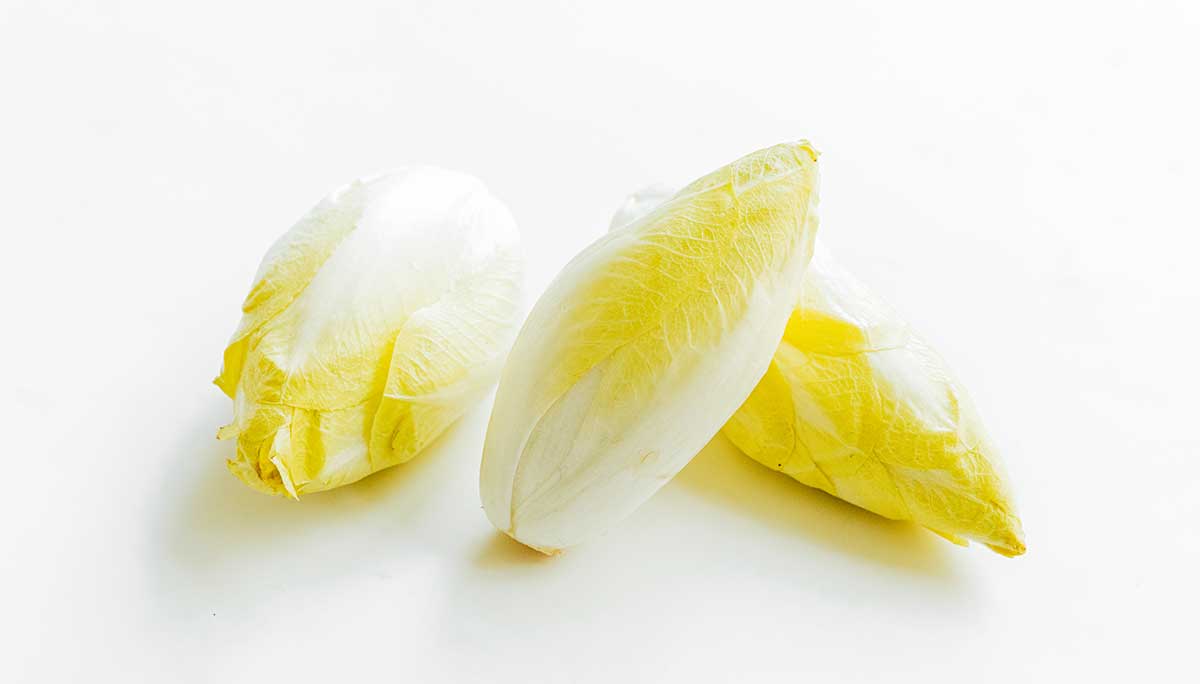
Belgian Endive Variations
You may see a couple different types of endives at the store. Though standard Belgian endives are what you’ll find (like in these photos), you may also see red or curly endive from time to time.
- Belgian Endive: Belgian endives have a white and yellow or light green coloring. They’re bitter in flavor with sweet and nutty undertones. Choose the heads with the least amount of green. More yellow = a fresher endive!
- Red Belgian Endive: The interesting thing about red Belgian endives is that they’re more a tiny radicchio than an endive! They can be used interchangeably with the white and yellow endive.
- Curly Endive: Finally, the curly endive (or frisée) is bright green and looks similar to a head of arugula. It’s quite literally curly at the ends, and the outer leaves hold more bitterness than the inside leaves.
Where to buy it
Endive can be found at nearly all grocery stores year round (you can thank the harvesting process for that!).
You may find endive to be more expensive than lettuce or other chicories. This is due to a combination of the farming process (long and rigorous), combined with the cost of often being imported from Belgium. The great flavor makes it well worth it!
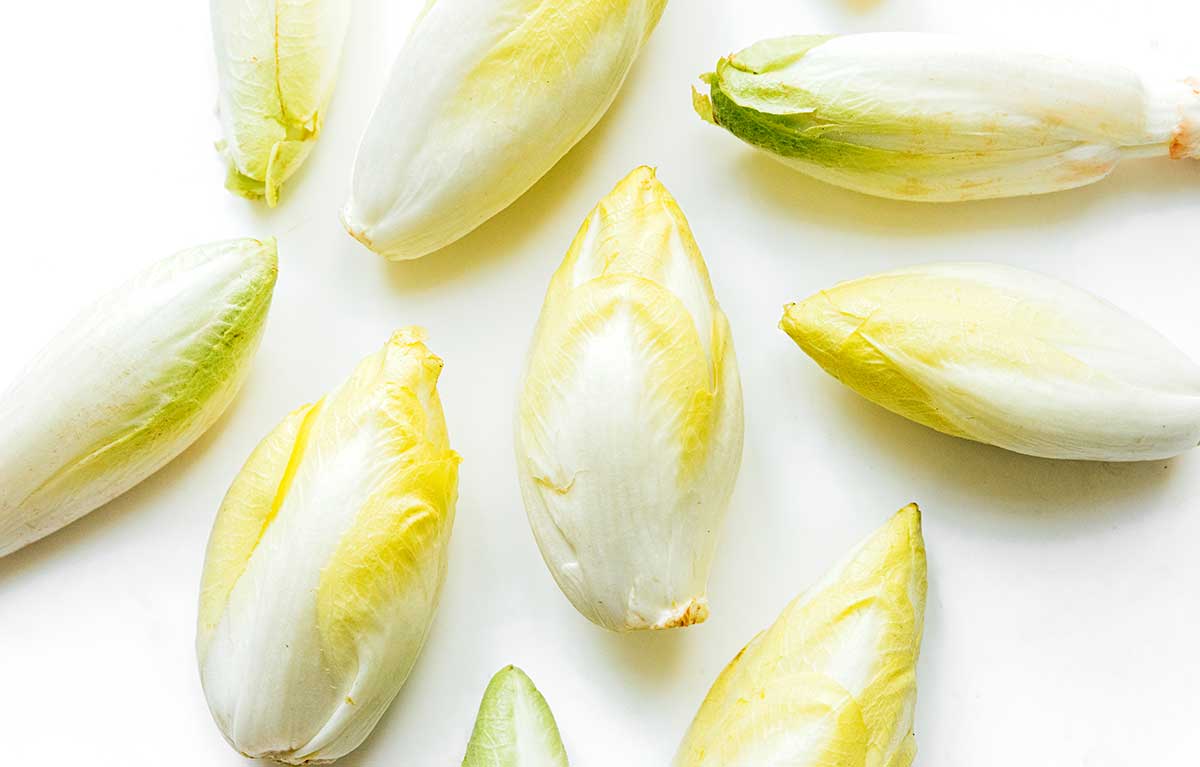
How to prep and cook endive
Endive is easy to prep. If you plan to use it in a salad, you can cut it by first removing the outer “bad” leaves, and then slicing horizontally. Toss it in a strainer and rinse well.
Then, there are so many cooking options! You can keep it raw and use in salads or as “boats” for dips or fillings. They make great taco shells! Another option is to grill them up or roast them on the stove. Cooking endive removes some of that bitter bite and brings out more of the sweet flavors.
No matter how you plan to cook your endive, keep it stored in the crisper beforehand!
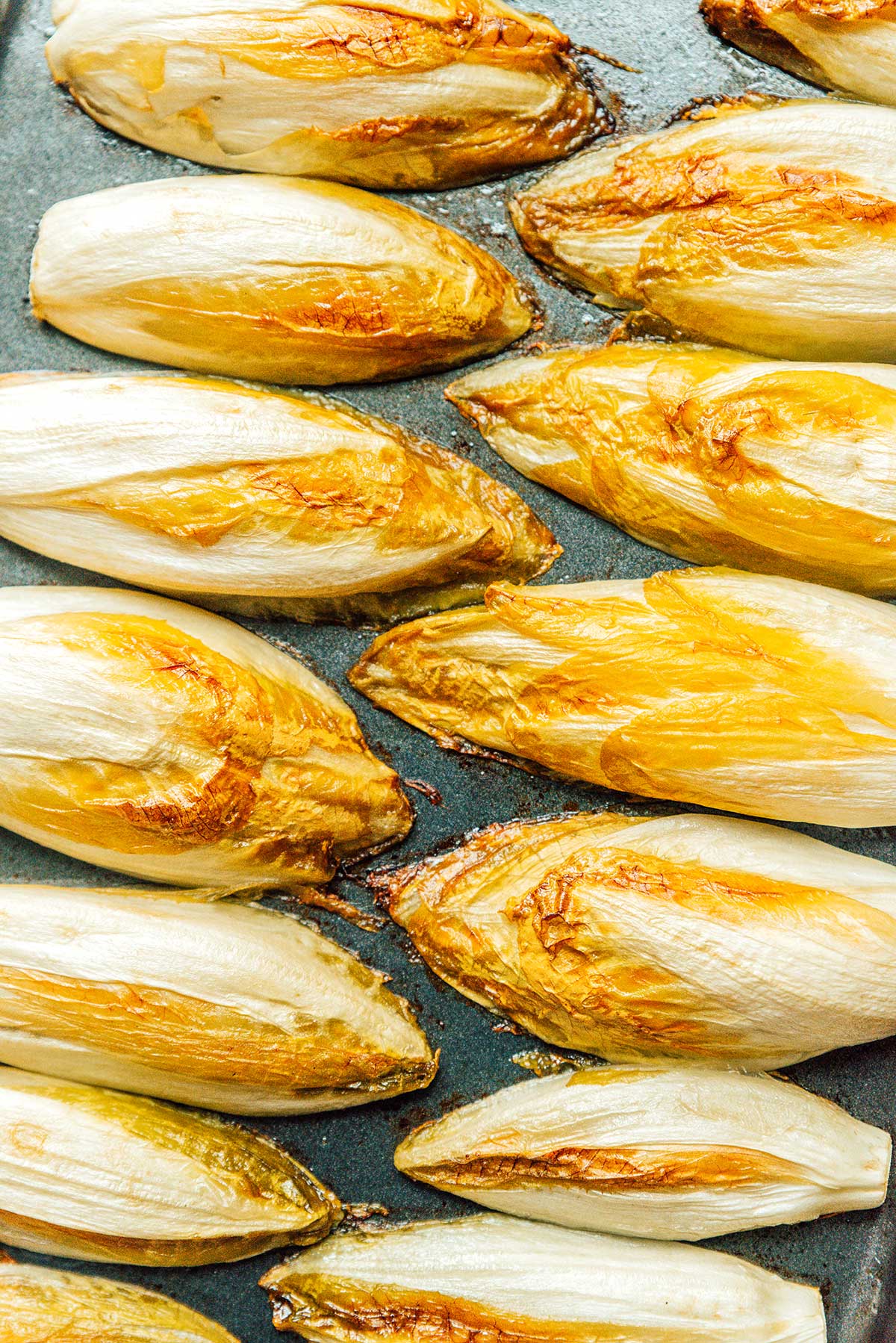
How to use it in recipes
Salad: When it comes to endive salads, I recommend pairing it with sweet toppings to bring out those sweet and nutty undertones. You can use things like pine nuts, dried cranberries, glazed pecans, walnuts, pears — the list goes on! Blue cheese is always a delicious pairing for endive as well.
Sautéed: Easily sauté endive by cutting the heads into quarters are searing them on the stove. Top with a sugar and vinegar glaze, balsamic, and pepper. YUM.
Roasted: Roasting endive is another great way to serve them. It removes a lot of that bitterness, while making them soft and tender. Try roasted endive in this Endive Gratin!
The world of endive is pretty big, and these are only a couple of ways to use them. This week I’ll be sharing some of my favorite full endive recipes — stay tuned!
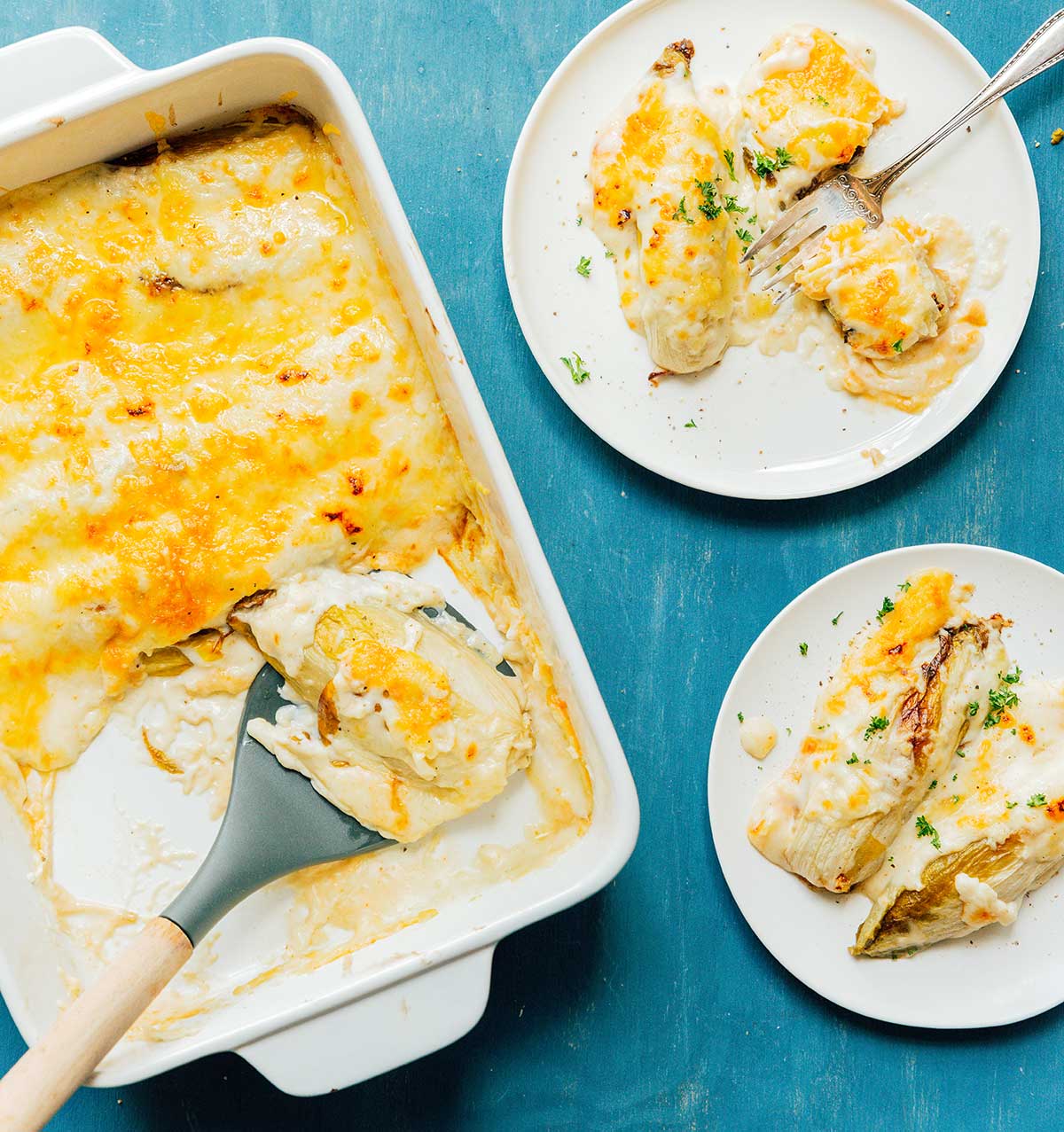
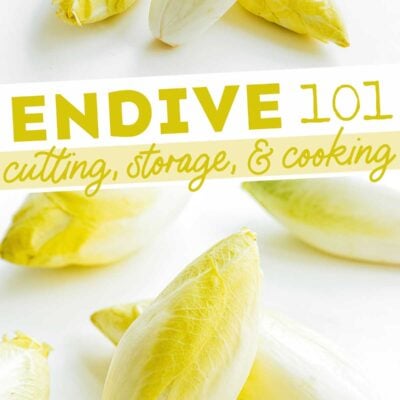
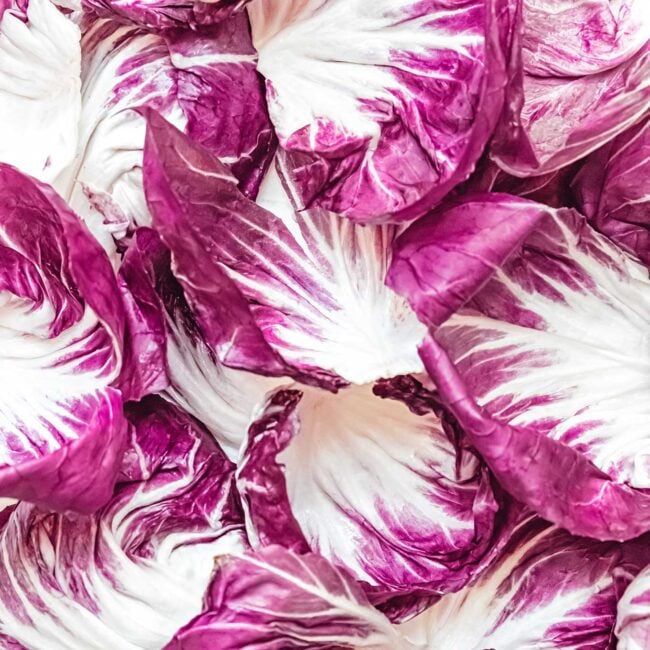
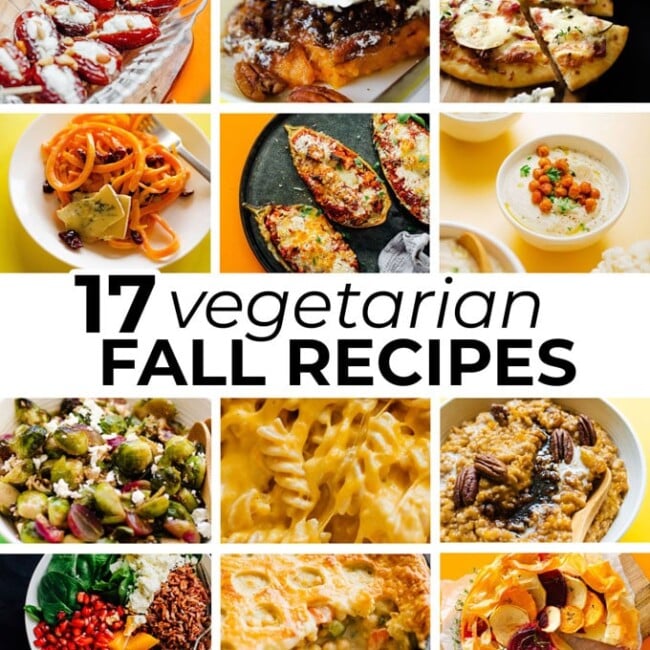
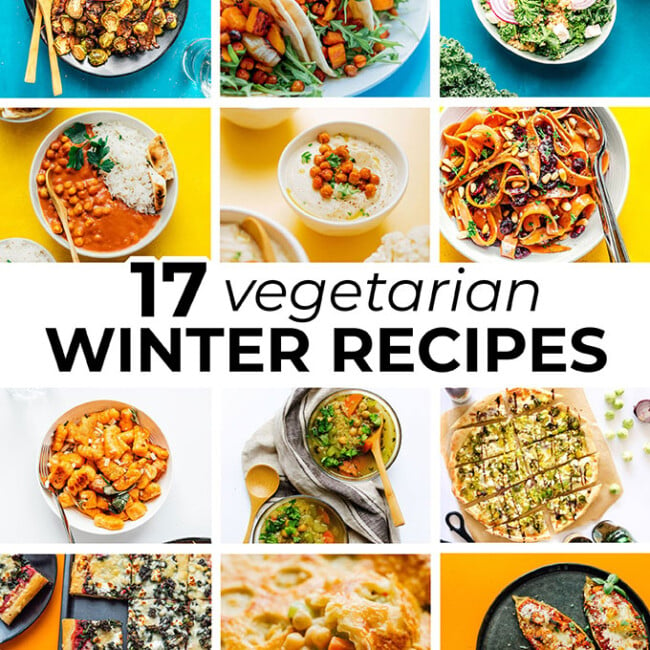
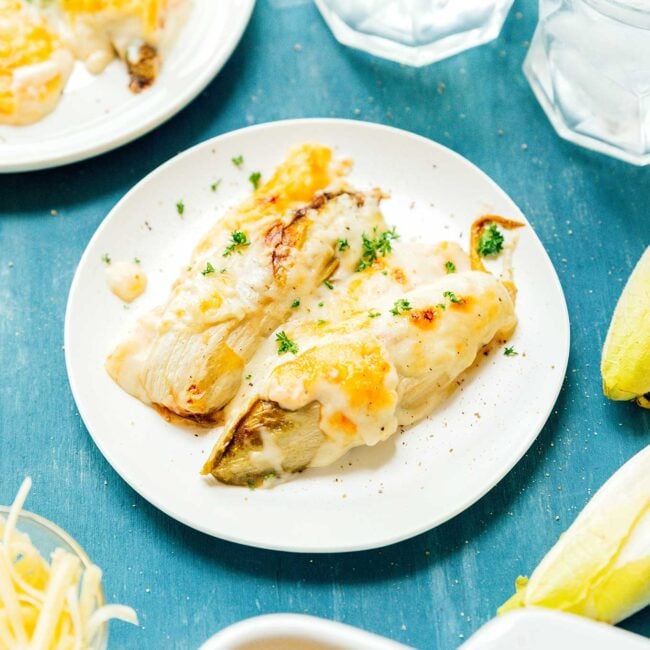
Leave a Comment